Five stories, five drivers and five life-threatening situations. All five drivers have continued their career after a major accident. All five have won Grands Prix after their accident. Three of the five drivers even became world champions. F1Today looks at their comebacks after the serious crashes that went on to shape and define their careers
Preface
Mika Hakkinen was nothing short of a rebel at the beginning of his career. He became British Formula 3 champion in 1990 after a tough fight against Mika Salo. Both drivers grew up in Helsinki and were good friends with each other. Hakkinen made his debut in Formula 1 for Lotus-Judd in 1991. The Finn scored points in his third race, on a wet day Imola where he drove to fifth place. In 1992 he got Johnny Herbert as a teammate and scored eleven points. When translated to the current point system, that racks up to 67. Hakkinen drove in 1993 as a test driver for McLaren, the team he would drive with until 2001. In 1993 he replaced Michael Andretti after the Italian Grand Prix. In Estoril, Hakinnen was faster than Senna in qualifying and scored the first podium of his career in Japan. But despite the raw speed that Hakkinen had, he found himself in trouble several times. The young driver was regularly labeled as a crash-pilot. It was not entirely unjustified as Hakkinen, in his younger years, regularly went far over the limit. It first became apparent in his first race for McLaren in 1993 at Estoril where he crashed the MP4-8 at the last turn. In 1994. Hakkinen drove very strongly in the second part of the season. This transformation was partly due to a race ban he recieved after an incident at Silverstone. This ban was suspended and then enforced after the German Grand Prix, when he crashed with David Coulthard. Nevertheless, the Finn ended the championship in 1994 with 26 points, nowadays a solid 99 points. The year of 1995 was a season of transition for McLaren. A partnership with Mercedes started, Hakkinen got a new teammate in the shape of Nigel Mansell, but the car had reliability problems from the beginning of the year. Mika managed to score two podiums when the end of the season rolled around. With seventeen points on the board, Mika arrived at the last Grand Prix weekend of the year. It was very nearly his last weekend ever.
1995 LX EDS Australian Grand Prix
 The Australian Grand Prix of 1995 was last race on the Adelaide street circuit. The circuit was part of the Formula 1 calendar from 1985 and was known to be short and bumpy. The circuit had in the past guaranteed a number of curious decisions for the world title. In 1986 there was tyre blowout for Nigel Mansell at the rear of his Williams Honda. Mansell drove the car into a safe place, but had he parked the car at Brabham-Straight in the middle of the track, the race could have a red flag and the Englishman would have become world champion. In 1991 the race was flagged after fourteen laps because it was to dangerous to drive in the rain. In 1993 Ayrton Senna won his last Grand Prix at the last race of the season. In 1994, the Formula 1 world witnessed the infamous Schumacher/Hill incident. For 1995 the race was scheduled for 12 November. Damon Hill would win a bizarre race, two laps ahead of Olivier Panis and Gianni Morbidelli. But there was no interest in the race as the entire Formula 1 world wondered if safety in the premier class of motorsport was still to be guaranteed. These urgent questions were asked after Friday's qualifying session.
The Australian Grand Prix of 1995 was last race on the Adelaide street circuit. The circuit was part of the Formula 1 calendar from 1985 and was known to be short and bumpy. The circuit had in the past guaranteed a number of curious decisions for the world title. In 1986 there was tyre blowout for Nigel Mansell at the rear of his Williams Honda. Mansell drove the car into a safe place, but had he parked the car at Brabham-Straight in the middle of the track, the race could have a red flag and the Englishman would have become world champion. In 1991 the race was flagged after fourteen laps because it was to dangerous to drive in the rain. In 1993 Ayrton Senna won his last Grand Prix at the last race of the season. In 1994, the Formula 1 world witnessed the infamous Schumacher/Hill incident. For 1995 the race was scheduled for 12 November. Damon Hill would win a bizarre race, two laps ahead of Olivier Panis and Gianni Morbidelli. But there was no interest in the race as the entire Formula 1 world wondered if safety in the premier class of motorsport was still to be guaranteed. These urgent questions were asked after Friday's qualifying session.
That Friday afternoon Hakkinen arrived as normal at Brewery Bend, a quick right turn in the middle of the circuit. Mika's left rear tyre broke, and at 200 km/h the McLaren-Mercedes crashed into the tyre wall. The impact was so hard that Mika's head hit the steering wheel and then hit the cockpit edge. The steering wheel was broken in half and the buttons of the wheel were placed in Hakkinen's helmet.
"I remember standing there in the wall, I could not move my arms and legs, I could not concentrate and I did not know what had happened," Hakkinen said later in one of the few interviews he had about his accident. "I thought, okay Mika, calmly now, do not panic, admonish yourself and everything will come right in. When I thought that, I lost consciousness, I can not remember the rest."
A fortune for Hakkinen was the fact that there were two doctors standing right at that bend. They were intensive care specialist Jerome Cockings and neurologist Stephen Lewis. These two doctors were on the spot within seconds of the accident. It would prove to be the rescue of Mika Hakkinen. Although Sid Watkins, the 'house doctor' of Formula 1, was still on his way to the accident at that time, both doctors proved extremely competent and placed a Tracheotomy in the neck of the Finn when it was found that he had no air intake. Because of the serious injuries to the face of Hakkinen, the blood that ran out of his mouth that became increasingly grey and both doctors decided to place this incision on the spot. Watkins then arrived on the spot and decided not to interfere with the course of events. Mika received medication and his color improved immediately. Hakkinen gained consciousness and left the scene of the accident by stretcher. The second advantage of Hakkinen was that the hospital where he would be transported was exactly 200 meters from the crash site.
The situation in the hospital
Hakkinen said: "The first person I saw when I woke up was Lisa Dennis, Ron's wife, there was also a bigger woman in the room, she was nice and sweet. I suddenly thought that I had been released by two little angels and that they had taken me to heaven, and when I looked a bit more to the left of the room I saw Ron Dennis standing there, then I knew I was not in heaven. He said the accident came about through a flat tyre, and that was reassuring for me, because I knew it was not my own fault.
The Fin explained in detail what happened next in the hospital: "The stay in the hospital was very good on one hand, the doctors did an excellent job, the downside was all those tests, tests, devices on my head, cuts in my head and the pain I had to suffer. It was terrible. I thought a couple of times that I would die from the pain. I was full of medication that made me feel drowsy. The accident had given me a skull fracture and certain functions were turned off, for example, I could not move my eyes, I could not drink, because everything immediately fell out of my mouth. I wondered if I could ever have a normal life, get in the car and continue racing."
The return to London and his home in Monaco
Mika returned to London in December. Stephen Lewis, the man who found him together with Jerome Cockings, was at his side. In London, Hakkinen was investigated by Sid Watkins. Watkins took care of Hakkinen and decided to set up a rehabilitation program. He then went to Monaco, where he stayed: "I wanted to get back in the car and had to fight hard every day because the whole process was difficult, both mentally and physically, I suffered from severe headaches while I was running, and after a while it got better, but I still had problems with my face and hearing, I have had a number of operations to restore this." During the winter Hakkinen trained hard to get back to the top level. McLaren planned a test for Paul Ricard on February 5th. Hakkinen had to and would be there.
The comeback, 87 days after the accident
"There I was in the South of France, Monday, February 5th, 87 days after the accident, everyone was friendly when I arrived, but I saw how the mechanics were looking at me. I tried to behave as normal as possible but I saw from their faces that they thought, "That guy is going home again." I thought, I will show all these people that I have come back to win, when I got back in the car for the first time, I felt like I was home. This was my office, this is my thing, this is who I am, this is Mika Hakkinen. I drove out of the pits and drove 63 laps during that day, my time was half a second faster than that of Michael Schumacher's Ferrari the day before.
"I told the mechanics: Pick up the car and I'll see you in Melbourne." Hakkinen got a new teammate in David Coulthard. A quick young Scotsman who also loved life next to the job. Mika was more reserved, especially after his crash. Coulthard and Hakkinen were teammates at McLaren for six years. Coulthard was a man of his word, something that became clear during the 1998 Australian Grand Prix where the Scot would come up with a 'gentlemans agreement'. Hakkinen could win the race because it had been discussed in advance that the person who would come through the first corner first would become the winner.
Two world titles and another serious accident in Australia
In 1997 Hakkinen was clearly the fastest driver of the field in the second part of  the season. The well-developed McLaren looked promising for a victory several times. That victory only came at the European Grand Prix, but it was a crowning achievement in the work of the Finn. An agreement between McLaren and Williams concerning the 'non-assault treaty on Villeneuve' was maintained by both teams. Hakkinen won the Grand Prix, McLaren's first since the victory of Senna at Adelaide in 1993. For 1998 and 1999, the Woking team had arguably the best package. Hakkinen's title campaign was helped in 1999 by the Michael Schumacher crash at Silverstone, which meant his biggest challenger was Eddie Irvine. Hakkinen took the world title in 1998 and 1999 but in 2000 he had to accept defeat to Michael Schumacher, who began his reign of dominance. In the fight for the victory at Spa, Hakkinen made one of the most beautiful overtaking manoeuvres of that decade.
the season. The well-developed McLaren looked promising for a victory several times. That victory only came at the European Grand Prix, but it was a crowning achievement in the work of the Finn. An agreement between McLaren and Williams concerning the 'non-assault treaty on Villeneuve' was maintained by both teams. Hakkinen won the Grand Prix, McLaren's first since the victory of Senna at Adelaide in 1993. For 1998 and 1999, the Woking team had arguably the best package. Hakkinen's title campaign was helped in 1999 by the Michael Schumacher crash at Silverstone, which meant his biggest challenger was Eddie Irvine. Hakkinen took the world title in 1998 and 1999 but in 2000 he had to accept defeat to Michael Schumacher, who began his reign of dominance. In the fight for the victory at Spa, Hakkinen made one of the most beautiful overtaking manoeuvres of that decade.
When lapping Ricardo Zonta, Schumacher chose the left side and Hakkinen the right side and cleared both cars. In the end, the victory over Spa was not enough to reach his title. Hakkinen won the Grands Prix of Great Britain and the United States in 2001 and finished fourth during his last race at Suzuka. A few days after the Japanese Grand Prix, Mika Hakkinen explained why he would take a sabbatical: "My crash at the beginning of the year in Melbourne gave me a deja-vu, I crashed due to a mechanical problem in a right turn, and when I flew to the tyre stacks, those moments of Adelaide came back into my head. I could not easily understand why that happened with this car. We had a lot of test kilometres, and when I got to the hospital in Melbourne I knew it would be a very difficult season."
Possible return and comeback in the DTM
In the period after his retirement, Hakkinen spoke with several teams. For example, during the 2004 season he was associated with Williams. Hakkinen was the dream candidate for Frank Williams to succeed Juan Pablo Montoya. But the Finn decided that a return to Formula 1 was out of the question: "It's impossible to think that I'm going to do Formula 1 again because my reaction speed is no longer the same level as six years ago, I've slowed down and my vision has drastically decreased."
 That did not mean that the Finn would stop racing. In 2005 he signed a contract for HWA to participate in the Deursche Tourenwagen Masters. Hakkinen would ride a total of 31 races in the DTM, in which he won three races (Spa, Lausitzring and Mugello). After 2007 it was over regarding the top level of motorsport. Hakkinen drove his last race in 2011, in a AMG Motorsport registered Mercedes Benz SLS AMG GT3, but did not reach the finish during the six-hour race at Zhuhai. Mika Hakkinen started in 161 F1 Grands Prix, won two world championships, achieved 26 pole positions and rode 25 fastest laps. The Finn achieved all these results after his terrifying crash in Adelaide and it can rightly be said that Mika Hakkinen has used his 'second chance' for glory.
That did not mean that the Finn would stop racing. In 2005 he signed a contract for HWA to participate in the Deursche Tourenwagen Masters. Hakkinen would ride a total of 31 races in the DTM, in which he won three races (Spa, Lausitzring and Mugello). After 2007 it was over regarding the top level of motorsport. Hakkinen drove his last race in 2011, in a AMG Motorsport registered Mercedes Benz SLS AMG GT3, but did not reach the finish during the six-hour race at Zhuhai. Mika Hakkinen started in 161 F1 Grands Prix, won two world championships, achieved 26 pole positions and rode 25 fastest laps. The Finn achieved all these results after his terrifying crash in Adelaide and it can rightly be said that Mika Hakkinen has used his 'second chance' for glory.
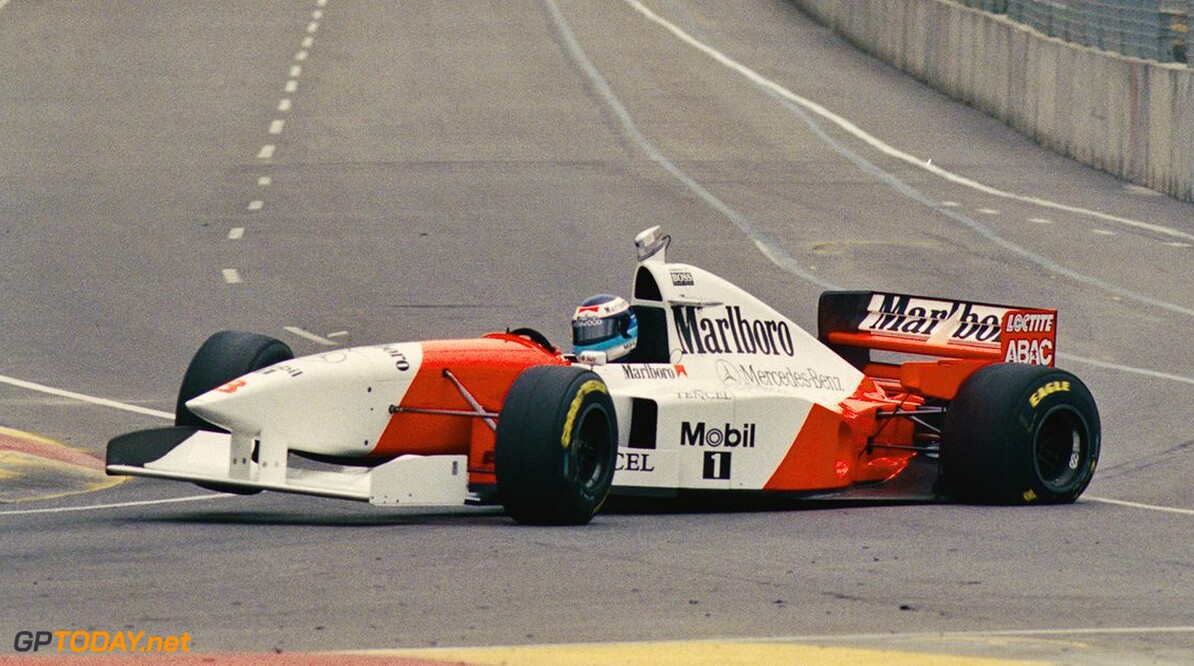
 5
5













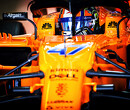

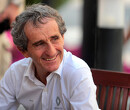
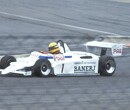
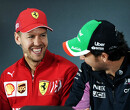

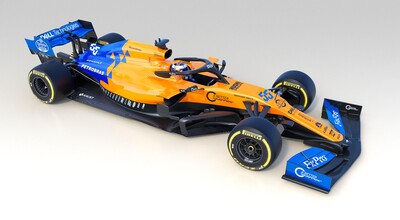


Replies (5)
Login to replyajpennypacker
Posts: 2,475
Childhood hero. Absolute legend. One of the few where I never hear anyone disputing his "legendhood"
mcbhargav
Posts: 1,332
Loving this article. Please do continue to share such fascinating/important stories.
NathanOlder
Posts: 2
Great piece, 1 mistake that really stands out for me though, "Hakkinen won the Grand Prix, McLaren's first since the victory of Senna at Adelaide in 1993" but Coulthard won 2 races before Hakkinen won at Jerez so it wasn't Mclarens first since Senna in 93.
MotorsportEncyclopedia
Posts: 931
True! My fault. Mika Hakkinen won his first Grand Prix, it was the first time that McLaren won the last Grand Prix of the season since 1993, when Senna won the Australian Grand Prix.
f1dave
Posts: 782
I can't forget him crying trackside at Monza.